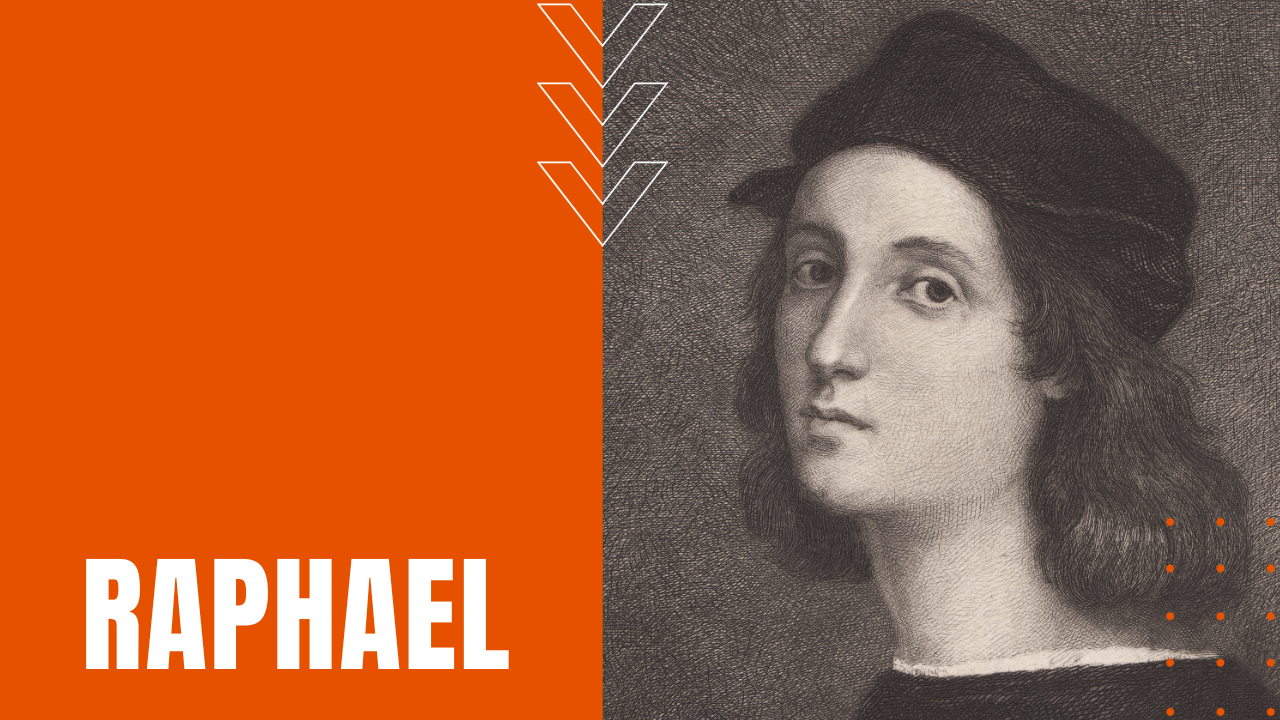Raphael

Born Raffaello Sanzio in 1483 Urbino Italy, Raphael’s father taught him basic painting techniques and the principles of humanistic philosophy in the Duke of Urbino’s court, and when his father died suddenly when Raphael was just eleven years old, he soon rose in stature to be considered one of the finest painters in a town already brimming with master artists.
Gifted Apprenticeship
Beginning a four-year apprenticeship under Perugino, as a teenager, Raphael developed his own unique painting style, as witnessed in such early works as his 1502 Mond Crucifixion, his 1503 The Three Graces and his 1504 Marriage of the Virgin. Moving to Florence that same year, Raphael’s later art would be heavily influenced by the works of Fra Bartolommeo, Leonardo da Vince, Michelangelo and Masaccio, injecting an intricate, expressive style absent in his earlier paintings.
A String of Madonnas
Producing a series of Madonnas over the next three years, his experimentation and growth as an artist culminated in works such as La belle jardinière and the Entombment, before moving to Rome in 1508 to paint in the Vatican Stanze and Stanza della Segnatura rooms under the patronage of Pope Julius II, producing a series of some of the most highly regarded frescos of the Italian High Renaissance. During the same period, Raphael also produced his famed Madonna of the Chair and Sistine Madonna, and as his reputation and finances grew under his driven ambition, Raphael was able to hire a crew of assistants to finish his frescoes, allowing him to focus on other projects, including his impressive achievements as an architect.
Hired by the Pope
After famed architect Donato Bramante died in 1514, Pope Leo X hired Raphael as his chief architect, where Raphael designed the chapel of Santa Eligio degli Orefici, Rome’s Santa Maria del Popolo Chapel and an interior space inside Saint Peter’s new basilica. He also took on secular architectural projects, which helped define the architectural styles of the late Renaissance and early Baroque periods. Passing away on his 37th birthday from mysterious causes, when his funeral mass was held at the Vatican, his unfinished Transfiguration was placed on his coffin stand, before his body was interred at the Pantheon in Rome. Today, Raphael continues to be celebrated for his balanced and harmonious compositions, making Raphael, a leading figure of the Italian Renaissance.
